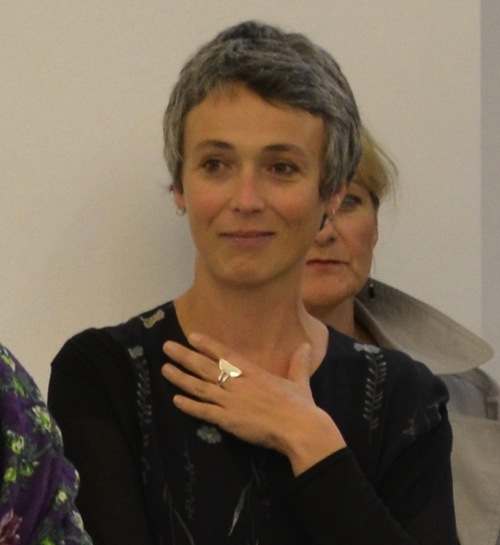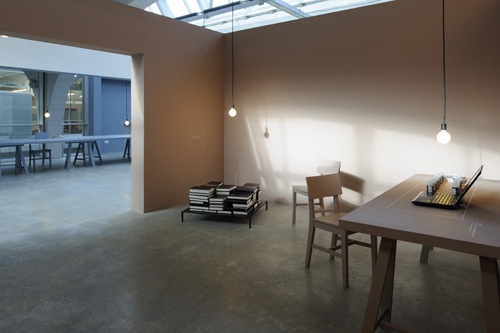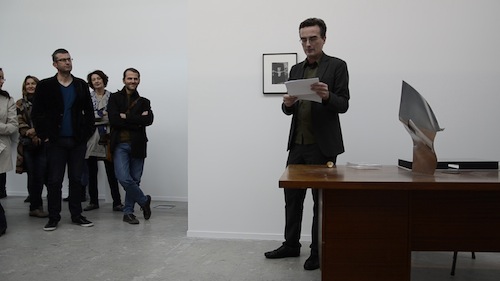Based in France, Sandrine Wymann is curator and director of La Kunsthalle Mulhouse, and president of the Versant Est contemporary art network in Alsace. She has organized numerous projects, exhibitions, and residences, working with artists such as Franck Bragigand, Noureddine Tilsaghani, Gaëlle Lucas, Catryn Boch, Natacha Paganelli and Thomas Lang, and most recently Younès Rahmoun and Viviane Rabaud. In 2007 and 2008, Wymann participated in Multipistes, a collaborative multimedia arts project for which she curated shows like Foules, fools featuring Stepehen Wilks’s traveling installation Trojadonkey. In years prior, she was in charge of the visual department at the Institut Français de Casablanca in Morocco.
I’ve recently gotten to know Sandrine, who is one of the most approachable people I’ve ever come across in the art world. She is a woman in power in this field, and a superb role model. Her joy and enthusiasm for art remains intact.
Georgia Kotretsos: You are clearly interested in oriental influences on contemporary art, as well as committed to studying the contributions of other cultures to the arts. How did these interests develop?
Sandrine Wymann: I can’t really speak about an oriental influence, or even about any particular interest in oriental art. What attracted me above all was a sense of difference. I am very curious about the unknown. What escapes me attracts me, and I am fascinated by things that touch me but that I do not understand. This was the case for Arab art, so the reasons behind my first connections with Arab art and creation were much more emotional than intellectual.
I then discovered a very sincere form of engagement with the world among contemporary Moroccan artists, and compared with those I knew in France, their forms of expression and their artistic development show deep links with their social and political context. This direct engagement with the world allowed me to enter a dialogue with them and to start reflecting on areas for work through meetings and invitations. That said, what mattered was not so much that they were Moroccan, but that art had such an important role in their lives. Artistic creation became a form of urgency and resistance.
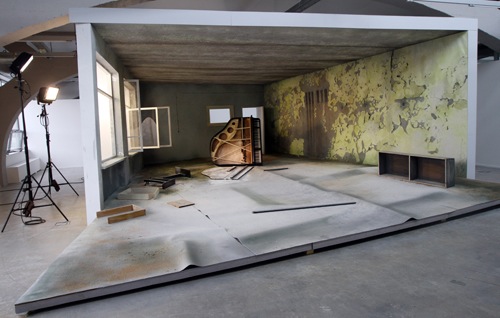
Elena Costelian, “La Veillée,” 2012. Installed in the exhibition “Tchernobyl on Tour” at La Kunsthalle Mulhouse, curated by Sandrine Wymann. Courtesy La Kunsthalle Mulhouse.
GK: What led you to Morocco and l’Institut Français de Casablanca?
SW: It was the desire to escape from an intellectually constructed idea of cultural differences that made me want to go there. At one point in my career I felt very marked by cultural exchanges and felt I needed to put myself in danger, and throw myself in at the deep end without really knowing how well I would cope. I think I can say today that I wanted to place myself in the position of an immigrant. It may seem anecdotic, but for us Europeans, it is a fairly rare experience and even more difficult to imagine. We go abroad either on holiday or for an international work contract. Those who leave for the unknown are very rare, and I wanted to put myself in that situation. I do not know if I really did that, as upon arrival I very quickly got a job at the Institut Français de Casablanca.
GK: In 2007, you collaborated with curator Abdellah Karroum on Multipistes, where artists as well as curators from Africa came together to work on a project. How have the four-year post at l’Institut Français de Casablanca and the two-year Multipistes project informed your practice today?
SW: Of course experiences and collaborations shape our development and these two steps made a particularly large impression on me as a curator and an artistic project manager. At the Institut Français de Casablanca I learned to create a contextualized project and question the cultural prejudices which shape us all. I also had to find my own voice at the heart of a state institution in a foreign country. These establishments have a relevance that is at once obvious, through their openness, and also highly refutable because of their role in the game of international politics.
After that the Multipistes project, which seemed more independent at first, also showed me the complexity of an international program which proves to be infinitely dependent on financial means and political schemes put forward by the participants it brings together.
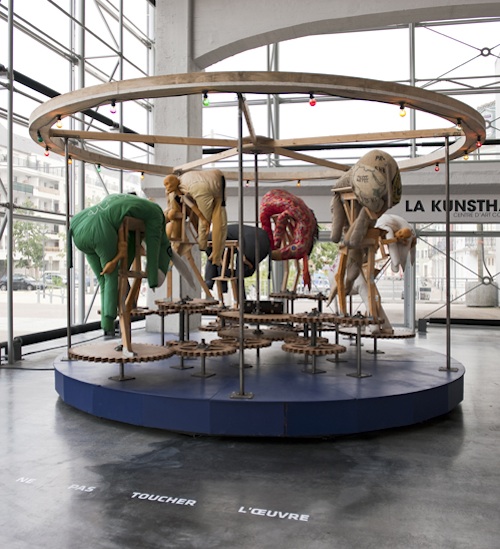
Stephen Wilks, “Trojandonkey,” 2010-ongoing. Installed as part of “Foules, fools,” curated by Sandrine Wymann. Courtesy La Kunsthalle Mulhouse.
GK: When we met at the bar, I enjoyed the way you spoke about leaving Morocco; you said that you wanted to prevent yourself from becoming a drastically different person. Tell me about that decision and what exactly you were trying to prevent?
SW: I chose to leave the country for various reasons, some of which were very factual, like the end of a contract and the change of leadership at the Institut Français, but above all I was running away from a certain image of the French person abroad. I was violently confronted with postcolonial issues and attitudes and at that time I did not feel sufficiently equipped to deal with this while living there. I needed to prove to myself that I was able to return to being a French person in France. I felt it was necessary to work more on the question of origins and their influence on the understanding of the contemporary world. This is something I can study and experiment with legitimately now at the Kunsthalle in Mulhouse, in my own country.
GK: The Kunsthalle Mulhouse was inaugurated four years ago, when you were given your first directorial position. What liberties have you enjoyed as the result of building a new institution from the ground up rather than inheriting one? Also, could you tell me about the mission of the Kunsthalle Mulhouse?
SW: What immediately struck me at the Kunsthalle was that I could develop a project in which cultural questions took center stage. From a geographical point of view, Mulhouse is a border town and made up of cultural intersections; from a personal point of view I am at home here; from an artistic point of view, my local partners quickly allowed me to organize projects and invitations which brought meaning to my role as director of an art center.
GK: In my experience, it is almost as if the Kunsthalle is treated like a studio. It gets a lot of daily creative traffic—meaning visitors, projects, and artist talks. How do you view this dynamic—this open space that facilitates and even serves up art in the making?
SW: After these years of confronting the question of cultural differences, and after really capturing it (although without completely realizing it) I understood that it would be essential to my development and inherent to all my projects. So I chose to place it at the heart of my artistic project. It struck me that to stop it from becoming an impediment, I had to enrich it and channel it through inclusive projects, bringing differences together through a common subject matter. In everything I undertake at the Kunsthalle, I endeavour to place encounters at the heart of my projects. I increasingly realize that cultural differences are not only a question of geographical distance. Here, I have been able to observe them in Franco-Swiss relationships, and I have also noticed that the public does not necessarily meet the artists. On the other hand, artists have difficulty responding directly to the features, riches, and inhabitants of places that invite them. From my point of view, making art today means provoking encounters and observing what they produce.
And that’s a wrap!

